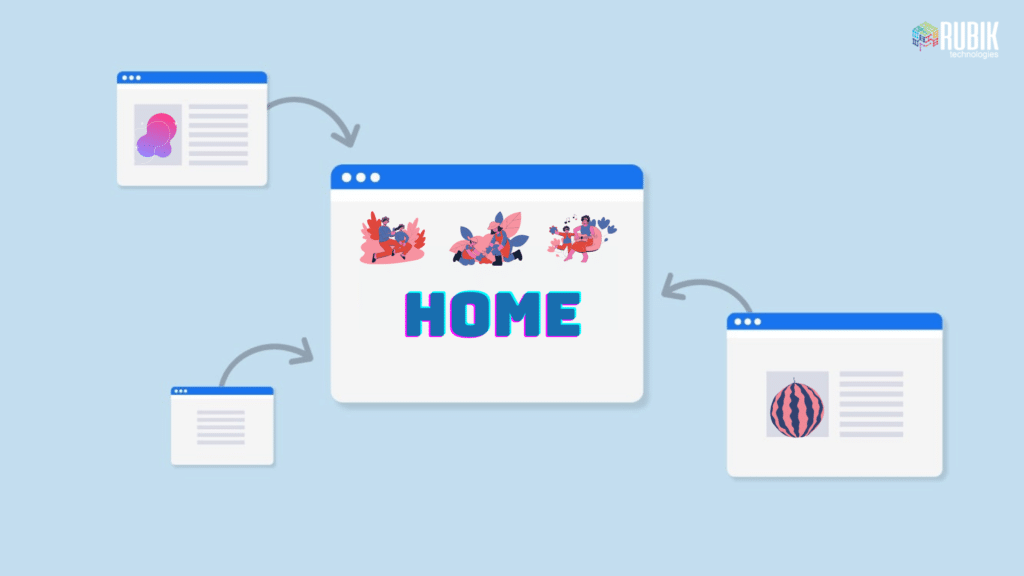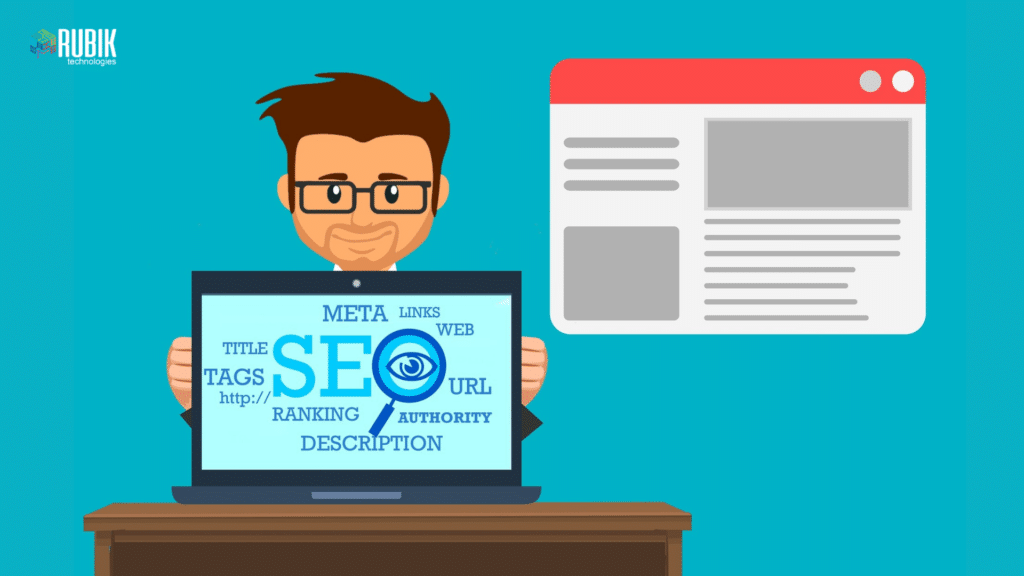SEO Strategies for eCommerce sites that convert
Welcome to our blog article. If you’re here, it’s for an important reason: you want to give importance to your e-commerce site in the eyes of Google. To do this, you already know that you need to implement some SEO strategies for eCommerce site or eShop in the content of your site.
Maybe you’ve already read something on the web or your friends have given you some tips, but all this information has made you even more confused. Don’t panic! We have tried various tips for these strategies, and we have chosen the most important and easy ones to follow.
Below we present you a contents table of the article with the best advice on SEO strategies for eCommerce.
1.Choose a qualitative CMS
2.Keep a simple structure for your eCommerce
3.Dedicate enough time to each product
4.Use unique tag titles
5.Find the right keywords
6.Improve your URLs
7.Google Analytics is your best friend
8.Create a blog
9.Use Social Networks
10.Newsletter’s special offers
11.Bring in an SEO expert
1. Choose a qualitative CMS

Get off to a good start! Before starting anything, the best tip to follow that we can give you for your SEO eCommerce strategy is to use a qualitative CMS. When you want to share photos, videos, graphics, and descriptive texts in abundance, all indispensable elements for an online store, not only for search engines but also for your users, you need a powerful ally.
We know that eCommerce products and services are constantly changing. To ensure that this content is always managed and presented correctly, it is vital to use a Content Management System that can easily manage all the necessary changes during the continuity of your work and your business.
Some of them are WordPress, Magento, PrestaShop, Drupal, etc.
2. Keep a simple structure for your eCommerce

After deciding which is going to be your favorite CMS ally, you can move on to the next step. For an online store, it is essential to always keep in mind the ease of use.
Is it accessible from all devices? From 2017 Google penalizes all pages that are not optimized for mobile use. Shocking! If you are not optimized for mobile, you do not exist from the SEO’s point of view.
Understandable, however, being that most people nowadays surf, search and connect on their mobile, and for your eShop, it is vital to be where the users are. People who navigate through small devices such as mobile phones do not want to see bulky things and move from one page to another, so to please them, we need to use some strategies.
Each item on the homepage must be reviewed in detail and your products mustn’t be more than three clicks from the home page. Do you want your user to take a purchase action and convert them to your customer? Then, you must adapt a few eCommerce solutions. The sooner you seduce them with your products, the sooner you will have them.
3. Dedicate enough time to each product

All pretty interesting, but specifically, what should be done to really have a detailed homepage? What exactly can we do to improve the SEO of an eCommerce? We’ll explain, for everything done there is a lot of dedication behind.
“The price of anything is the amount of life you exchange for it.” – Henry David Thoreau
If you want to adopt a winning strategy, you should devote the due time to each product you present.
The products must have unique descriptions, otherwise, the search engines read them as duplicates and penalize your page. Creative descriptions are not enough; each product must have special keywords. Read more about this on point 5.
Likewise, it is important that each of them has unique tag titles for both search engines and users who want to find your products. Read more about this on point 4.
Taking care of the visual aspect is equally important. The images you implement in your eShop should be optimized for the web, have their own dedicated name (alt tag), preferably the keyword, and should be described correctly.
4. Use unique tag titles
Every person on earth has its unique name, surname, and unique identification number that distinguishes him/her from all others. If we want to find someone, we’ll only need to search their data on the appropriate systems. The tag titles that we use in SEO for eCommerce work more or less as the unique data of each person, but for products or services offered in the online store.
Meta tags are an important factor that help search engines understand what your page is about. They are also the first impression users get of your site. So for both search engines and your customers, you should be careful to implement unique product tag descriptions.
Title tags are found in the following three points:
(1) In search engine results pages (SERPs),
(2) In search engines
(3) In social networks.
But how do tag titles appear? In the following, we give you a practical example of what a title and meta description are.

5. Find the right keywords

We have just mentioned the uniqueness of tag titles. In order for them to remain unique from each other but at the same time be relevant, you need to find the right keywords.
This means that you have to start thinking like a user; how do they search? what are they looking for?
With a simple Google search, you can see for yourself what we are writing about. If you want to go deeper and to get a more professional overview, you can turn to tools, extensions created by Google, and other people who like you are working on SEO.
They can show you how many times a particular word is searched, its value today, the location, where is it searched more frequently, and much more. These are very interesting data for your eCommerce and its growth in the future.
6. Improve your URLs

Once you have finished improving your keywords, you are sure that your potential customers will be able to find you much more easily. On the other hand, you will know how to better target your users too. Ok but, can the search engine find you? Well, not really if your URL looks like this:
http//:www.ecommerceseostrategies/en/es/wp-427/N-82zZqz6Zdgl
What does a user understand by looking at this link? Little or nothing…
Much less will a search engine “understand”; in the end, it’s just a bot, right?
Search engines like Google don’t really like URL numbers, much less understand them. If we want to “impress” them, we need to optimize our SEO strategy by optimizing our links. How do we really optimize the URLs? Here are some ideas on how you can fix your links:
→ domain/category-name (category page)
→ domain/category-name/subcategory-name (subcategory page)
→ domain/category-name/subcategory-name/subcategory-name (sub subcategory page)
→ domain/category-name/subcategory-name/subcategory-name/product (product page)
7. Google Analytics is your best friend

What do we mean? Google Analytics is the analyst behind your site which controls and monitors users who visit your main page and all categories, subcategories, products, etc.
For those who don’t know it yet, online stores benefit from the data they can collect. The more you know about your users’ behavior, the better you know how to move and make the changes necessary to always be at the center of users’ attention.
Google Analytics can give you important metrics like:
– the time a user remains on each of your pages,
– the actions he takes on the pages,
– how long it takes to convert it into a customer,
– its value as a customer for you in the long run and much more.
If you haven’t installed it yet, you should do it!
8. Create a blog

Among the various methods, you can use to have a solid SEO strategy, writing on your eCommerce blog is the easiest and most powerful thing you can do to improve your site’s ranking in the eyes of search engines.
Creating content loaded with SEO on a regular basis will provide valid information to your potential customers but above all will give continuous input to search engines.
In the case of online stores, not everything can be written in the product description. The various ways of product usage or experiences with the products or services. An interesting thing you can do is to invite a certain Blogger or an Influencer to write an article for you or even on you, perhaps telling them about their experience with the product/service. These can also have a big impact on social media. You should, however, always keep in mind that you must respond to your followers, to their compliments, questions, or suggestions.
This is an easy but very effective way on how you can attract visits from social channels to your blog, and from there to your site. Search engines “go crazy” for click flows.
9. Use Social Networks

We have not mentioned in vain the importance of social media presence.
It is vital for an online store to make people understand its brand identity, have a strong presence, generate leads and increase traffic; people often buy from simply browsing social media. Keep in mind that not only Facebook, Instagram, and Twitter are social channels, but also Reddit, Pinterest or YouTube are very good channels for search engines.
The more movement there is on or from your social profile, the better it is for your SEO strategy. Why? Simple, these movements, these activities, give you “importance” on the online world and search engines; this way, your site becomes a credible and trustworthy eCommerce, able to make you gain ground
10. Newsletter’s special offers

The prepared and shared contents, both on the blog and on social media, have to be interesting and relevant, so as to leverage the subscription to the Newsletter. But why do you need to use a newsletter?
People often visit an eCommerce site, fill the cart and leave it. We are here referring to a global cart abandonment rate of 75.52%. Simply attracting unique visits is not enough.
What interests us in the case of an online store, are the continuous visits, but also the actions undertaken in our eShop. At the top of the list, of course, remains the purchasing action, but people often need motivation and a small push.
One of the best tactics to encourage users is to introduce promotions.
You can offer promotions like:
a) Buy one get one,
b) Clearance promotion
c) Midseason sales
d) Last-minute promotions, etc.
To make it possible for these promotions to only reach specific people, such as people who have visited your site more than once and have filled the cart and then abandoned it, or people who are faithful followers on social media or in your articles, you can adopt a different strategy. Invite them to follow your newsletter to let them know that you often also offer various promotions.
Earn their trust, contact them personally, and try to get closer to the mentality of your potential customer. Give them the opportunity not only to buy but also to share a review on the product or service you are offering. Then invite them to interact with your page regularly. Your SEO will certainly benefit.
11. Bring in an SEO expert

Here we are at the last tip of this article on eCommerce SEO strategies. These are just some of the strategies examined over time, that have the most effective results but also among the easiest in the case of “DIY” among the multitudes of methodologies that exist. All this does not mean that the strategies indicated are the only ones, indeed, if you tried others, we would be interested to know your opinion about them, in particular on effective methods that perhaps have not been mentioned but that are equally powerful and easy to implement.
On the other hand, if what is written above is clear to you but too difficult to achieve due to lack of time or experience, we invite you to contact an SEO expert, who will certainly be able to dedicate himself to improving your eCommerce, using not only the methods mentioned above but also other more complex strategies, which only a professional in SEO’s world knows.








